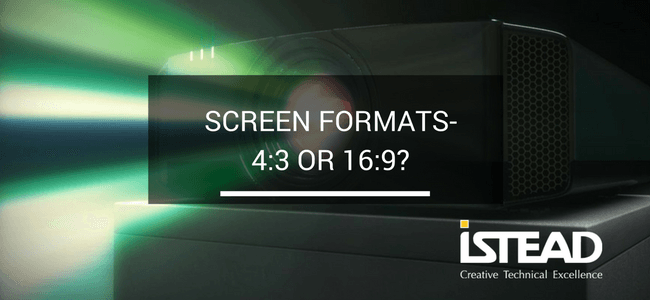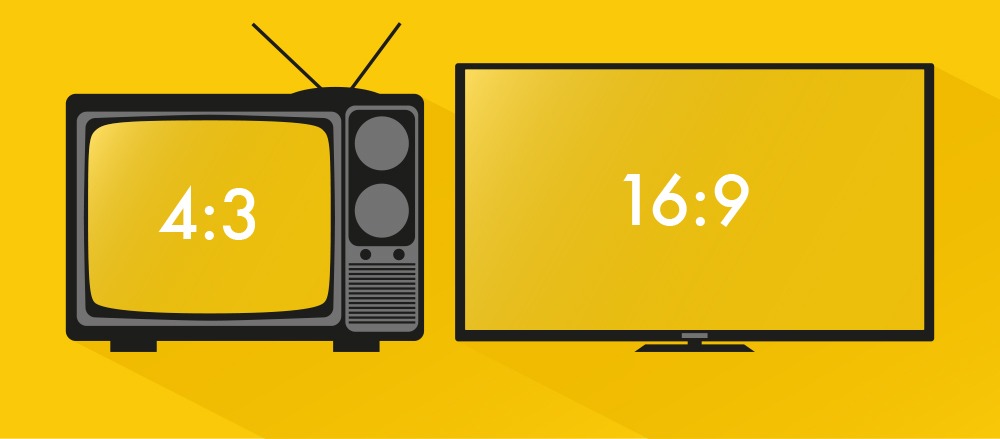Screen Formats – 4:3 or 16:9?
In the good old days the screens on your television sets and computer monitors were virtually square, with a width to height ratio of 4 to 3, commonly written as 4:3. This was mainly governed by the technology in the TV set that could not reproduce images that were any more irregular. Similar technological restrictions also required the screen of your TV to be bulbous and this favoured the screens being 4:3 ratios. This ratio also closely mimics a human’s field of view so experts believed it would feel ‘natural’ to watch.
In the mid 90’s TV manufacturers developed methods of producing affordable, wider, flatter screens which enabled TV sets to morph into a wider format, more in keeping with the screen shapes that cinema-goers were used to. Sony led the pioneering technology but were quickly followed by all the mainstream television companies.
Moving into the 21st Century, 16:9 TVs accounted for the vast majority of newly released models and as we reach modern day, 4:3 TV sets are now a thing of the past, with all domestic TV manufacturers having ceased production of the old shape, favouring 16:9 or even wider formats.
Computer monitors and laptops followed a similar route. 2008 was seen as the tipping point for the mainstream jump to widescreen formats. This step change is also shown in the software written around this time. Versions of Microsoft’s presentation package PowerPoint began introducing a widescreen slide design template to enable users to take full benefit of the extra space available on screen.
In Istead’s world of large screen projection, we made the jump to widescreen formats many years ago but with Microsoft admitting only a few weeks ago that 8% of the world’s computers still run on their 2001 XP Operating System, you can see why we still get presented with slides created in 4:3 format. Luckily our creative multimedia designers and clever technology can adapt these ‘square’ slides to widescreen, but we still think it will be many years before the 4:3 legacy finally leaves our world.


